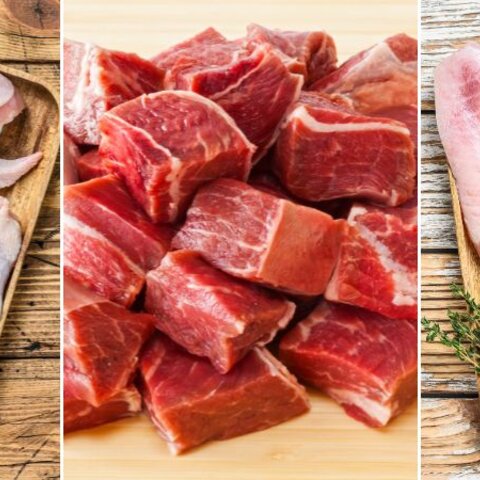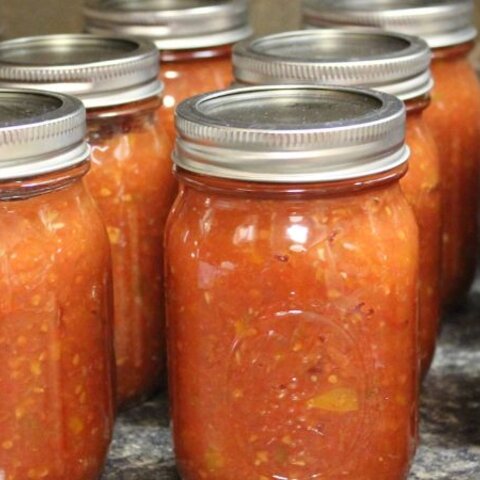
Home food preservation has become very popular. It is wonderful to preserve your own fruits and vegetables to fill your pantry. The following are common practices that are no longer consider safe to preserve foods and a few important reminders for safe home canned products.
- Any recipe used to home preserve food must follow the latest research-based canning methods. Using old or new untested recipes (including making up your own recipe) is not recommended. Recipes must be evaluated in a laboratory to assure the acidity and processing requirements are met. Tested recipes can be found at the National Center for Home Food Preservation and individual state Extension offices such as Nebraska Extension.
- Do not to change or add anything to a tested recipe except dry spices and dried herbs.
- Only researched-based salsa recipes should be used. These recipes have enough acid to prevent the growth of harmful bacteria such as Clostridium botulinum. This bacteria in canned food may cause botulism—a deadly form of food poisoning. Increasing the amounts of vegetables or adding different vegetables changes the acidity levels and can result in the growth of botulism bacteria. The type of peppers can be interchanged if the total amount remains the same. More lemon juice or vinegar can be added if a tarter flavor is desired.
- Only use good quality produce that is free of disease and mold. Produce that is overripe or has become soft should not be used in canning. Over ripe produce is often lower in acid (higher pH) making canning unsafe.
- The acidity level of many foods including vinegar has changed over time. Using today’s food products might require different processing times or amounts than what was considered safe a few years ago.
Thickeners:
Adding any kind of thickener including modified or regular starch or flour will slow the rate of heat penetration into the product resulting in under-processing. The only time this is safe is when it is part of a scientifically tested recipe and then only in the amounts specified. There are commercially modified starches available but must be used in recipes designed to be used with that product.
Salt and sugar:
The amount of salt in any product EXCEPT pickles can be changed based on personal preference. It is not considered a preservative EXCEPT in pickled products. The amount of sugar in the syrup for canned fruit can be reduced safely but the color and texture of the fruit could be different, and the quality deteriorates quicker in lower sugar recipes. To reduce the amount of sugar in jams and jellies use recipes use recipes designed and tested for reduced sugar.
Elderberries:
Elderberries are low in acid and cannot be safely preserved using standard home-canning recommendations for fruits or berries. Elderberries or elderberry juice can be safely frozen.
Pumpkin:
Mashed or pureed pumpkin or winter squash is no longer considered safe to can. Pureed or mashed pumpkin can be frozen for long term storage. The USDA does have processing recommendations for pumpkin and winter squash cut into 1-inch cubes.
Summer squash:
Canning summer squash or zucchini is no longer considered safe. They are considered a low-acid food and the time needed to be pressure canned to kill the botulism bacteria has not been determined. It is best to freeze or pickle summer squash or zucchini.
Herb and oil mixtures:
Herb and oil mixtures are not safe to be canned. They are low-acid and could support the growth of botulism.
Commercially processed food:
There are no tested processes for re-canning commercially processed foods.
Tomatoes:
Tomatoes need an acid added to prevent the growth of botulism. Not all tomatoes have an adequate acid level (pH). Add two tablespoons of bottled lemon juice or ½ teaspoon of citric acid per quart of tomatoes. For pints, use one tablespoon bottled lemon juice or ¼ teaspoon citric acid. Acid can be added directly to the jars before filling with product. Add sugar to offset acid taste, if desired. Four tablespoons of a 5 percent acidity vinegar per quart may be used instead of lemon juice or citric acid. However, vinegar may cause undesirable flavor changes.
Butter:
Butter is a low acid food and should not be canned.
Quick breads:
Baking quick breads in canning jars and then placing a lid and ring on the jar to create a vacuum seal is not safe. They are low-acid and support the growth of bacteria.
Enjoy preserving your fruits and vegetables safely!
Sources:
Avoiding Common Canning Mistakes, Utah State University
Caution Against Canning White Fleshed Peaches and Elderberries, University of Wisconsin-Madison
Modified Food Starches, Penn State Extension
Selecting, Preparing and Canning Tomatoes, National Center for Home Food Preservation
This article was written in 2022 by Nancy Frecks and was peer-reviewed.
Tags:



